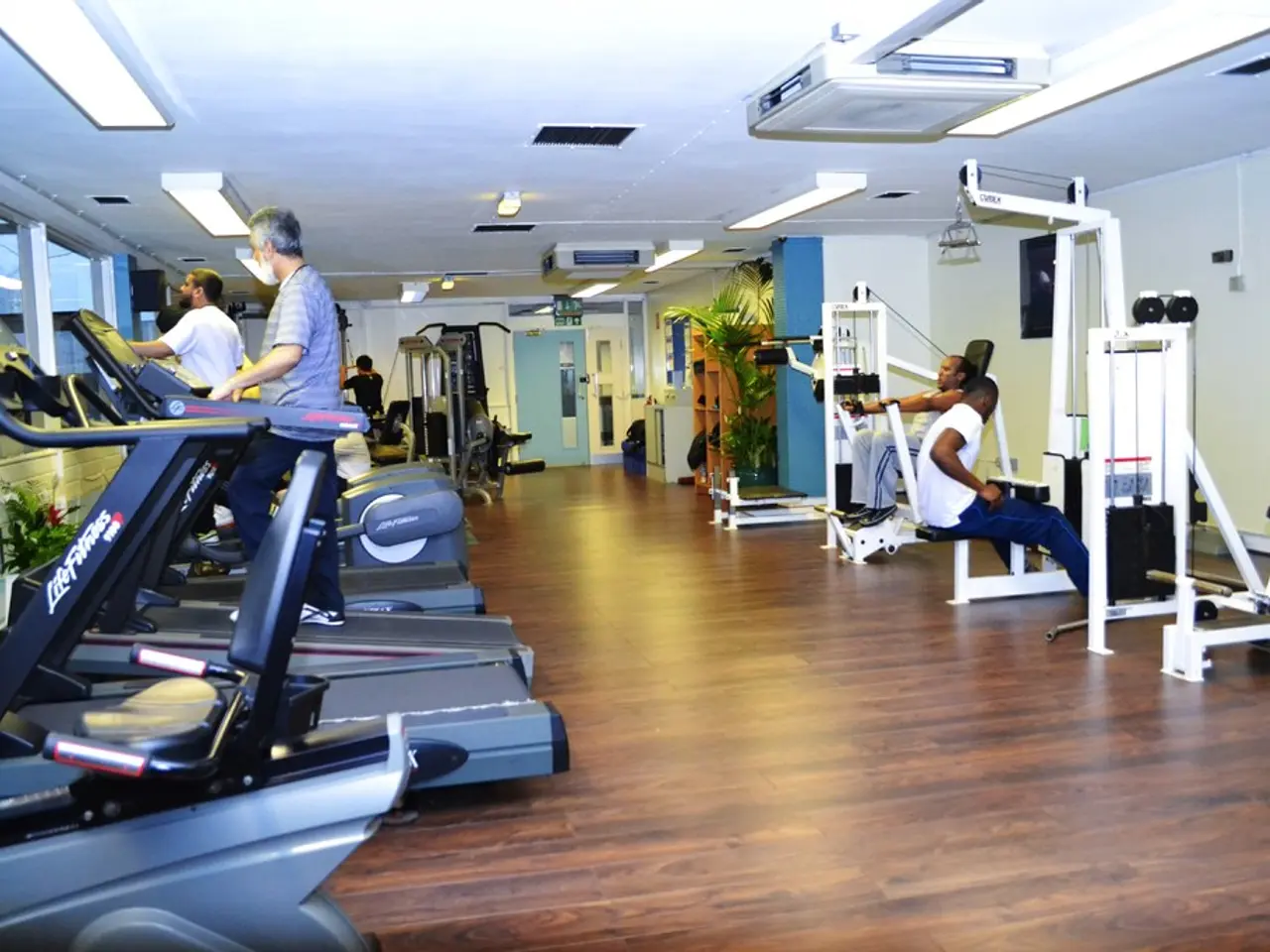Physical Activity's Impact on Parkinson's Disease: Boosting Capabilities Through Physical Engagement
In the UK, approximately 60,000 individuals are diagnosed with Parkinson's disease (PD) each year. This neurological disorder, characterised by symptoms such as resting tremors, muscle stiffness, slow movement, and balance difficulties, can significantly impact an individual's daily life. However, recent research suggests that regular exercise may offer a promising approach to managing PD symptoms and slowing down its progression.
Targeted physical activity tailored for PD patients can significantly enhance daily life and slow symptom progression through multiple mechanisms. Improvement in postural stability and balance, enhanced gait and walking performance, motor symptom improvement, increased muscle strength and physical function, and non-motor symptom benefits are some of the key advantages.
Supervised aerobic-strength exercises reduce postural sway, improving static and dynamic balance across different sensory conditions, and conditions that challenge motor control. Tailored exercise improves gait parameters, including faster walking speed and reduced stance time during dual-task walking, helping individuals maintain movement confidence and reducing the risk of falls. Exercise leads to clinically meaningful reductions in motor symptom severity as measured by PD rating scales, pointing to not only symptomatic relief but also functional gains.
Resistance and strength components of exercise help combat sarcopenia (muscle loss), improving lower limb strength and translating to better performance in functional tests like sit-to-stand movements. Targeted physical activity can also improve non-motor symptoms such as depressive symptoms, thereby enhancing overall quality of life.
Structured physical therapy and exercises focusing on gait, balance, and posture enhance coordination and reduce stiffness, leading to fewer falls and injuries. This promotes greater independence and confidence in routine activities. Using assessments that measure balance and gait under different conditions allows for personalised exercise programming to maximise benefits for each patient, helping maintain or even improve motor function over time.
Support and motivation for caregivers are crucial for maintaining an exercise routine for individuals with PD. Carers can play a vital role in helping individuals with PD stay committed to exercise routines and overcome obstacles. Enlisting the support of friends or family members can be helpful in maintaining an exercise routine.
It is important to educate oneself about PD to provide support for loved ones. Finding enjoyable, safe, and sustainable activities that can be maintained over the long term is essential. Aerobic exercises, strength training, balance exercises, stretching, and multitasking activities are beneficial for individuals with PD. Incorporating balance training, adaptive yoga, aquatic therapy, and tai chi into exercise routines can significantly improve the lives of individuals with PD.
Regular physical activity may improve overall cognitive function, mood regulation, and sleep quality in individuals with PD. Exercise may potentially slow the progression of PD by enhancing the brain's capacity for self-repair and adaptation. Overcoming challenges and barriers to exercise may require patience and perseverance. Consulting with healthcare professionals before starting any new exercise regimen is essential for individuals with PD.
In conclusion, targeted, supervised aerobic and strength training exercises tailored for PD patients improve balance, gait, and muscle strength, actively counteracting motor decline and enhancing daily function. These interventions also alleviate some non-motor symptoms and reduce fall risk, collectively improving quality of life and slowing symptom progression beyond what medication alone can achieve.
- Staying informed about the latest lifestyle news regarding medical-conditions like Parkinson's disease (PD) can help individuals understand the potential benefits of regular exercise for managing and slowing down the progression of chronic diseases like PD.
- Reading science news highlights the importance of focusing on health and wellness, specifically addressing the advantages of science-backed physical activity interventions for PD patients, such as aerobic-strength exercises, balance exercises, and resistance training.
- Maintaining a nutritious food regimen and a consistent exercise routine can help promote a healthy lifestyle and potentially slow down the onset and progression of neurological disorders, like PD and neurological-disorders.
- Prioritizing mental-health, beyond just physical health, is essential for individuals with PD as exercise can also improve overall cognitive function, mood regulation, and sleep quality, benefiting their daily lives and general well-being.
- In the realm of health-and-wellness, it's important to remember that treatments for chronic diseases like PD often require a multi-faceted approach, combining medical-treatments, lifestyle modifications, and mental health care to optimize quality of life and slow the progression of chronic diseases.








